Nintendo 3DS
Top 10 Best Nintendo 3DS Games of All Time!
With over 150 million units sold, the DS was the most successful system in Nintendo’s history. Everyone knew the ride wasn’t going to last forever, but its successor seemed to come of or nowhere. The Nintendo 3DS was formally announced in March of 2010, and it was on store shelves within a year. The system was similar to its predecessor in many ways, and it used the same dual screen setup. The top screen was larger this time around, however, and the graphics were vastly superior. The system featured a new analog thumb pad and improved network functionality, but its biggest selling point was its ability to display stereoscopic 3D images without the need for special glasses. Nintendo had played around with 3D in the past — the Virtual Boy being one obvious example — but the timing of the 3DS coincided with a larger trend in the entertainment industry. Avatar was breaking box office records, theaters were pushing 3D movies, and electronic companies were trying to sell 3D televisions. It was a trendy gimmick in 2011, but 3D wasn’t as important to the 3DS as its name would suggest. Nintendo even released versions of the console (dubbed the 2DS) that lacked the 3D functionality. The system stumbled out of the gates and it took a while to pick up steam, but the 3DS quietly amassed an amazing library filled with many must-have games. To keep thing interesting, ports of games that were originally released in previous generations won’t be considered for this list.
10
Luigi’s Mansion: Dark Moon
2013
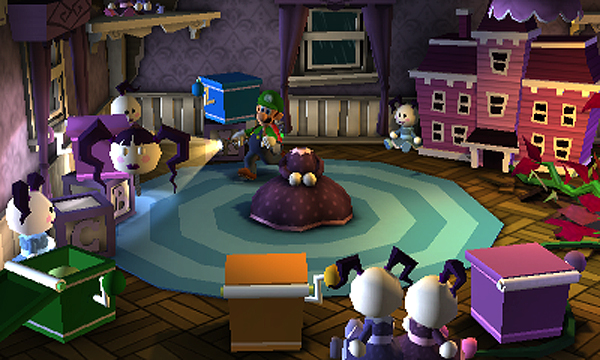
Luigi’s Mansion was Nintendo’s whimsical take on the survival-horror genre. The game was more Scooby Doo than Resident Evil, but it’s always fun to hunt ghosts with flashlights and glorified vacuum cleaners. Although Luigi’s Mansion was one of the flagship titles in the GameCube launch lineup, it took nearly 12 years for a sequel to arive! Next Level Games was commissioned to develop the title, and they did a great job of capturing the playful spirit of the original. Dark Moon used the same formula as its predecessor, but the setting was more varied since Luigi was given the opportunity to visit five separate mansions during the game. In addition to gloomy manors, he explores an overgrown greenhouse, an old clock factory, and a snowed-in mine. Nearly every room he visits is filled with surprises, and the environmental puzzles provide a layer of complexity to the lighthearted adventure. Dark Moon deserves a lot of credit for making use of the 3DS hardware. The diorama-like rooms look incredible in 3D, for instance, and the game also features a cooperative multiplayer mode that can be played locally or online via the Nintendo Network. Ultimately, the success of Dark Moon helped revive the series and gave Luigi fans something to look forward to. If nothing else, I think we can all agree that Luigi’s mischievous ghost dog was absolutely adorable.
9
Shantae and the Pirate’s Curse
2014
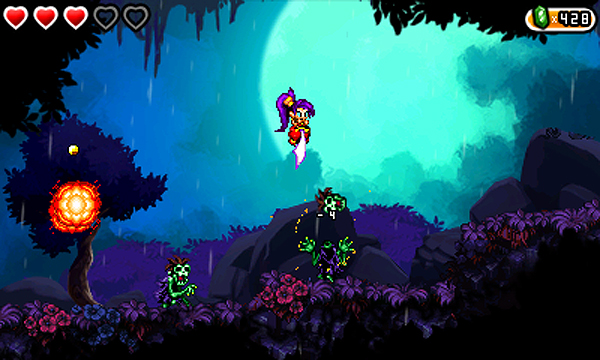
“Metroidvania” games are well-suited to handheld systems, and Shantae and the Pirate’s Curse is one of the best that the genre has to offer. While the Castlevania and Metroid offerings on the 3DS feature muddy polygonal graphics, Shantae boasts charming pixel art and vibrant colors. The animation is particularity impressive, and it’s surprising how expressive the tiny characters are. (The sharp writing also helps in this regard, and the game had me laughing out loud on more than one occasion.) The Pirate’s Curse is the third game in the Shantae series, but it features a host of new power-ups and abilities. With the right item, Shantae will be able to glide through the air, break through walls, or perform extra jumps in mid-air. The environmental puzzles force you to think outside the box, and you’ll need to make full use of your abilities to get past some of the old-school platforming challenges. In lieu of a fully interconnected world, the action is spread across a series of smaller islands. This format is ideal for a handheld game, and the areas all feel distinct from one another. You can never be sure what to expect next, and the game never stopped surprising me. (The impromptu chase scene through the forest is just one of the many stand-out moments.) I was so enthralled that I ended up playing through the entire adventure in a single sitting.
8
Monster Hunter 4 Ultimate
2015
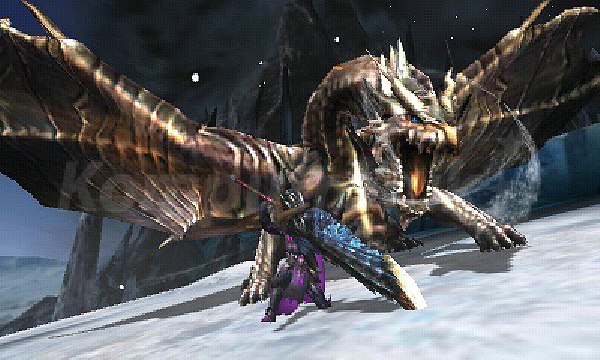
Like previous games in the series, Monster Hunter 4 Ultimate is an action RPG in which players face off against a variety of large creatures. In most RPGs, players level up by defeating enemies and gaining arbitrary experience points. In Monster Hunter, players use the materials they gain from slaying monsters to craft new weapons and gear. This, in turn, will allow them to face more powerful monsters and take on more challenging quests. Monster Hunter 4 put more emphasis on 3D combat than its predecessors did, and the players could use height advantages to jump on – or even mount – various creatures. The fluid climbing motions and the ability to attack from ledges made the game feel more dynamic that previous entries in the series. The mechanics might daunting at first, but Monster Hunter 4 Ultimate does a fantastic job of introducing new players to the complexities of the game. (In fact, that’s the main reason why I’d recommend it over Monster Hunter Generations.) I adore the art style in Generations and think its a perfect fit for the 3DS, but 4 Ultimate has better pacing overall. Whether you play with a group of friends or go it alone, Monster Hunter 4 Ultimate has hundreds of hours of content. It’s a perfect game for anyone who is looking for deep combat, intense boss battles, and a lot of customization.
7
Super Mario 3D Land
2011
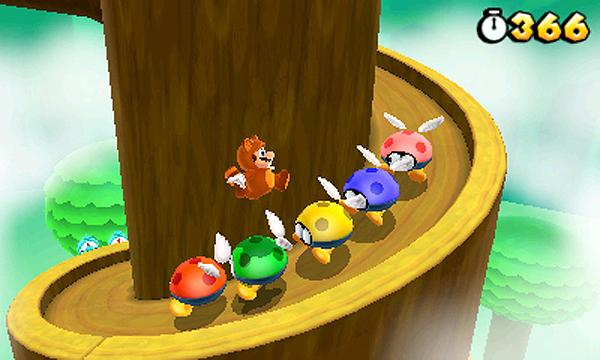
It’s customary for Nintendo systems to launch alongside a new Mario title, but Super Mario 3D Land was about nine months late to the party. It would have been the perfect launch title. The game bridges the gap between traditional 2D Mario titles and modern 3D Mario adventures. This ultimately results in a game that’s less linear than the side-scrolling 2D iterations but more platform-centric than the free-roaming 3D releases. Players can freely move Mario around in all directions with the circle pad, but the levels guide players toward a single goal. I’m not sure how they did it, but Nintendo combined elements from existing games and somehow created something new. On a related note, I appreciated how the game utilized the system’s 3D effects, and the added depth perception made it easier to tell where enemies and obstacles were in relation to Mario. Someone obviously put a lot of thought into the level designs. The game starts out pretty slow, but the intensity ramps up near the end and the stages become more creative. The power-ups were a lot of fun, too. I had a blast with the new boomerang, and the return of the Tanooki suit was long overdue. The game wasn’t exactly revolutionary, but Super Mario 3D Land was a great showcase for Nintendo’s newly-minted handheld.
6
Mario Kart 7
2011
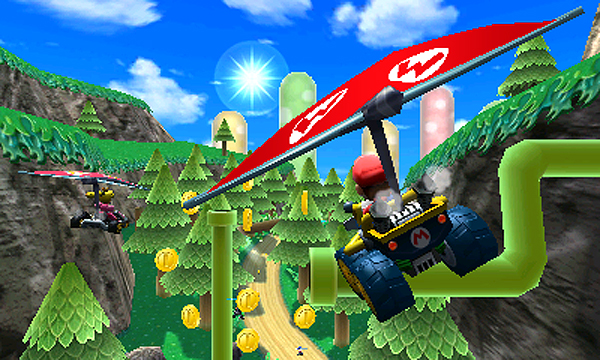
Mario Kart DS and Mario Kart Wii sold a combined 60 million copies, so its fair to say that Mario Kart 7 was one of the most important first-generation 3DS titles. The game lacked many features that its DS predecessor had and its roster was much smaller than the Wiis version’s was, but it also brought a lot of new things to the table. Some of these features (like gyro controls and an optional first-person view) were mere gimmicks, but the newly-added hang-gliding attachments and the ability to drive underwater were more substantive since they had a direct impact on the course designs. Players could also customize their vehicles by choosing their frames, wheels, and gliders. All told, there were nearly 1,200 possible kart combinations to experiment with. It might not be the most inspired choice for this list, but Mario Kart 7 was mechanically sound and endlessly fun. It was also a perfect fit for the 3DS due to its replay value and its “pick up and play” nature. The game received some criticism for being too formulaic, but Nintendo’s “one Mario Kart game per console” pattern is a testament to the lasting appeal of the series. It’s not necessary to annualize the franchise, since each release remains relevant for many years.
5
Pokémon Ultra Sun and Ultra Moon
2017

There were a lot of great JRPGs for the 3DS – inlcuding Bravely Defeatult and Shin Megami Tensei IV among others – but no Nintendo handheld would be complete without a Pokémon game. I’ll be the first to admit that the series hasn’t taken many huge leaps forward over the years, but each new game introduces something new. The core mechanics in each iteration revolve around catching, battling, and trading Pokémon, but Pokémon Sun and Moon were notable for a number of reasons. On the surface, they were the best-looking Pokémon games on a handheld system, and this ultimately made the characters and creatures seem more charismatic. The Hawaii-inspired setting was also a breath of fresh air, and everything from the music to the Pokémon themselves evoked a tropical island feel. On a related note, the newly-introduced island trials were a nice change of pace from the traditional training gyms that were found in previous Pokémon games. Sun and Moon introduced 81 new Pokémon, and they were the first Pokémon games in ages that were backwards-compatible with previous titles. (Pokémon caught in Pokémon X and Y, Pokémon Omega Ruby and Alpha Sapphire, and the Virtual Console versions of Pokémon Red, Blue and Yellow were all transferable to Sun and Moon). Ultra Sun and Ultra Moon were basically enhanced versions of Sun and Moon which introduced a handful of new Pokémon and featured a modified story. The most welcome addition in the Ultra versions, however, was the inclusion of an all-star antagonist group that was comprised of villains from previous Pokémon games. Nostalgia is a powerful drug.
4
Animal Crossing: New Leaf
2012
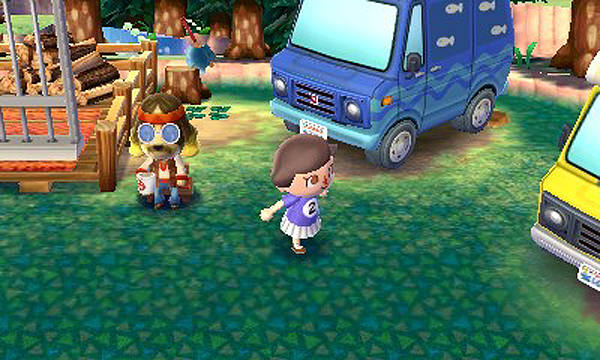
For those of you who have been living under a rock, Animal Crossing is a series of “community simulation” games that revolve around small villages populated by various animals. The franchise is well-known for its open-ended structure, and players are free to approach the games as they see fit. There are a number of activities to partake in, but there are no main objectives. Although players are encouraged to pay off their mortgage and make improvements to their home, there is technically no way to win or lose. You can spend your time picking weeds, chopping down trees, collecting fossils, catching insects, gathering fruit, designing clothes, fishing, or simply chatting with your neighbors. The series uses an internal clock to simulate real passage of time, and this makes everything seem more meaningful. The villagers have their own sleeping schedules, shops are only open during certain times, and seasonal events like Halloween coincide with real-world events. It feels like the villagers continue to live their lives even when you’re not playing the game, and this gives you a reason to care about your virtual neighbors. As the fourth main entry in the Animal Crossing series, New Leaf put more emphasis on customization. Players assumed the role of the town mayor in this outing, so they had control over various construction projects and town laws. The mayoral duties were not obligatory, however, and players could take a more carefree approach if they so desired. The game doesn’t demand anything from the player, but its deserving of their time. Once you become accustomed to life in Animal Crossing, it’s difficult to stay away.
3
Kid Icarus: Uprising
2012
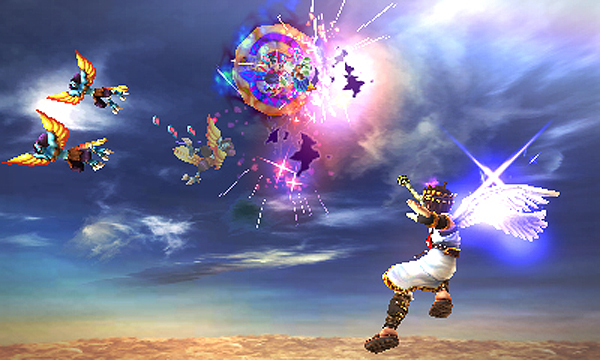
After laying dormant for over two decades, Kid Icarus was revived courtesy of Project Sora and Masahiro Sakurai. Like its 8-bit predecessors, Kid Icarus: Uprising featured multiple gameplay styles. The aerial-based rail shooter segments – which could be likened to StarFox or Sin & Punishment – are fast-paced and full of excitement. For these segments, players control Pit with the circle pad and move the aiming reticule with the stylus. The controls seem unwieldy at first, and the game even came with a stand to help alleviate the situation. Still, the stylus ultimately proves to be much quicker and precise than a thumb stick ever could be. Sadly, the on-foot areas are much less exciting. Using the stylus to control the camera is akin to spinning a globe, and it’s downright clumsy and unintuitive. The play mechanics are a mixed bag, but the story was perfectly paced and the game was loaded with bonus features. The adventure was a lot longer than I was expecting, and I appreciate how the intensity ramps up as you progress. The best thing about the game its presentation. It has some of the best visuals on the 3DS, the soundtrack is amazing, and the voice acting is thoroughly entertaining. Lady Pauletena serves as an exposition fairy throughout the game, and the constant banter between the characters is downright hilarious at times. Pit is arguably the most charismatic Nintendo character ever, and the enemies are given an opportunity to develop their own personalities. All in all, Kid Icarus: Uprising is proof that a game can have flaws and still be considered a classic.
2
Fire Emblem Awakening
2012
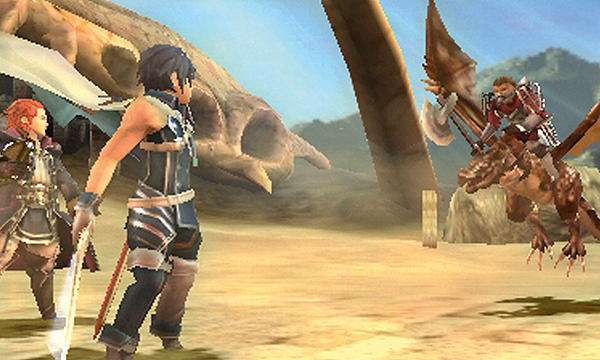
Like its predecessors, Fire Emblem Awakening is a tactical role-playing game with a fantasy theme. During the game, players move their characters across grid-based maps in order to fortify their position, seize enemy territory, defeat bosses, and complete other mission objectives. Awakening was the 13th Fire Emblem game, but the popularity of the series was on the decline. The designers were given word that Awakening might be the last game in the series, so they made it a point to incorporate elements from all previous Fire Emblem games. The also used the opportunity to introduce a number of new mechanics. The inclusion of a marriage system was especially significant, and it made the character relationships seem more significant than ever before. There were several Fire Emblem games released on the 3DS, and it was difficult to select one for this list. Fates has better mechanics and an added level of complexity, but the characters in Awakening were more likable and I got a kick out of the time travel concept. Awakening also deserves credit for revitalizing the series. Fire Emblem was on its death bed, but the unexpected success of Awakening ensured the continuation of the franchise. Critics insist that Awakening turned the series into a waifu simulator, but Fire Emblem is now one of Nintendo’s most profitable franchises. The “Awakening” subtitle turned out to be surprisingly prophetic.
1
The Legend of Zelda: A Link Between Worlds
2013
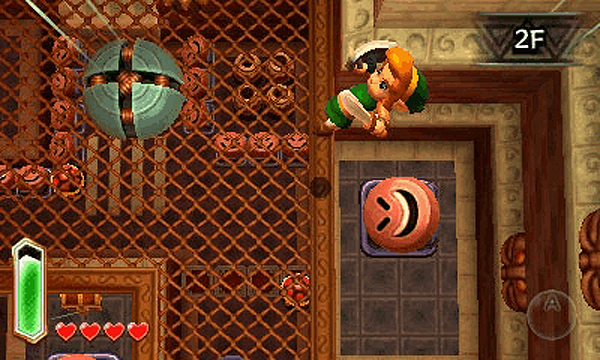
I enjoyed the touch-controlled Zelda adventures on the Nintendo DS, but A Link Between Worlds was a return to form for the series. The game was a direct successor to A Link to the Past, and the games featured enemies, items, and locations that were first seen in the SNES classic. Playing the game felt like taking a trip through memory lane, but this is not to say that the game doesn’t offer anything in the name of innovation. Although it’s primarily played from a top-down perspective, the game features a new mechanic that allows Link to merge into walls like a mural. Link can move along the walls horizontally after entering them, and this ultimately allows him to avoid hazards and reach seemingly unreachable areas. This gameplay mechanic is used for exploration, puzzle-solving, and boss battles, and it literally changes the way players look at the game. Another way the game switches things up is with its special items. Most Zelda games follow a simple formula that sees players finding a special item in a dungeon and using it to solve puzzles before repeating the process with a different item in the next dungeon. In A Link Between Worlds, however, all of the key items are all available to rent or purchase during the game’s first act. This system gives players more freedom, and the game’s progression feels decidedly different from previous Zelda titles. A Link Between Worlds is the perfect marriage between the old and the new, and it’s a worthy follow-up to one of the greatest SNES games of all-time.

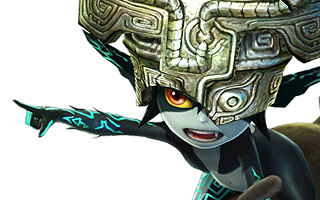
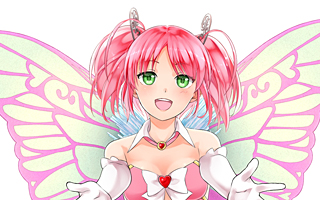
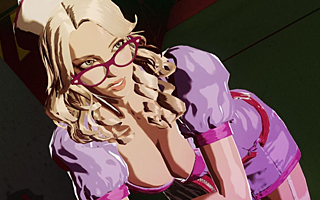
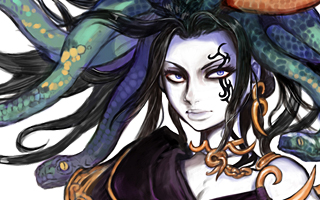
Do you agree with this list? Let us know what you think by leaving a comment below. Your opinion matters!